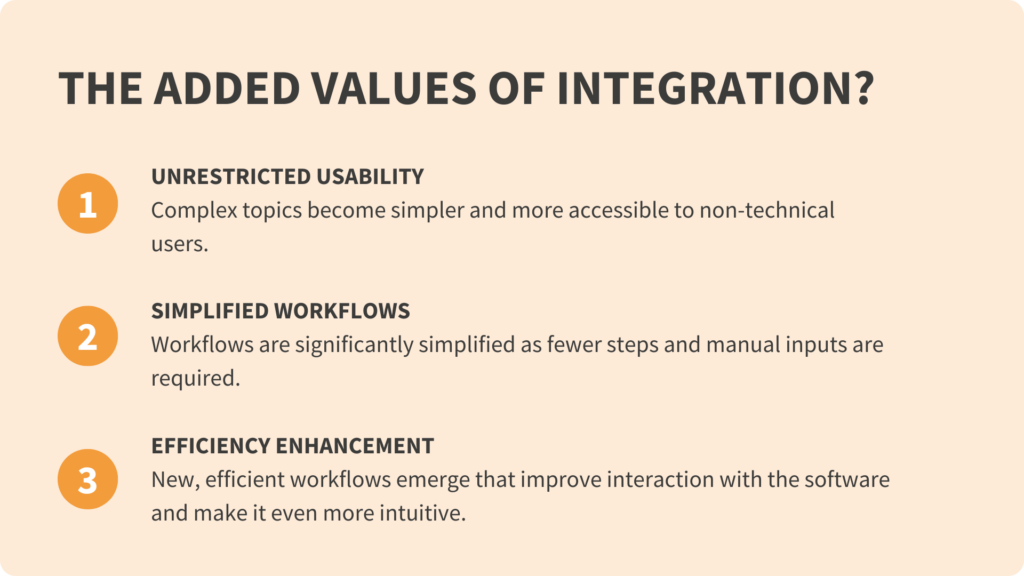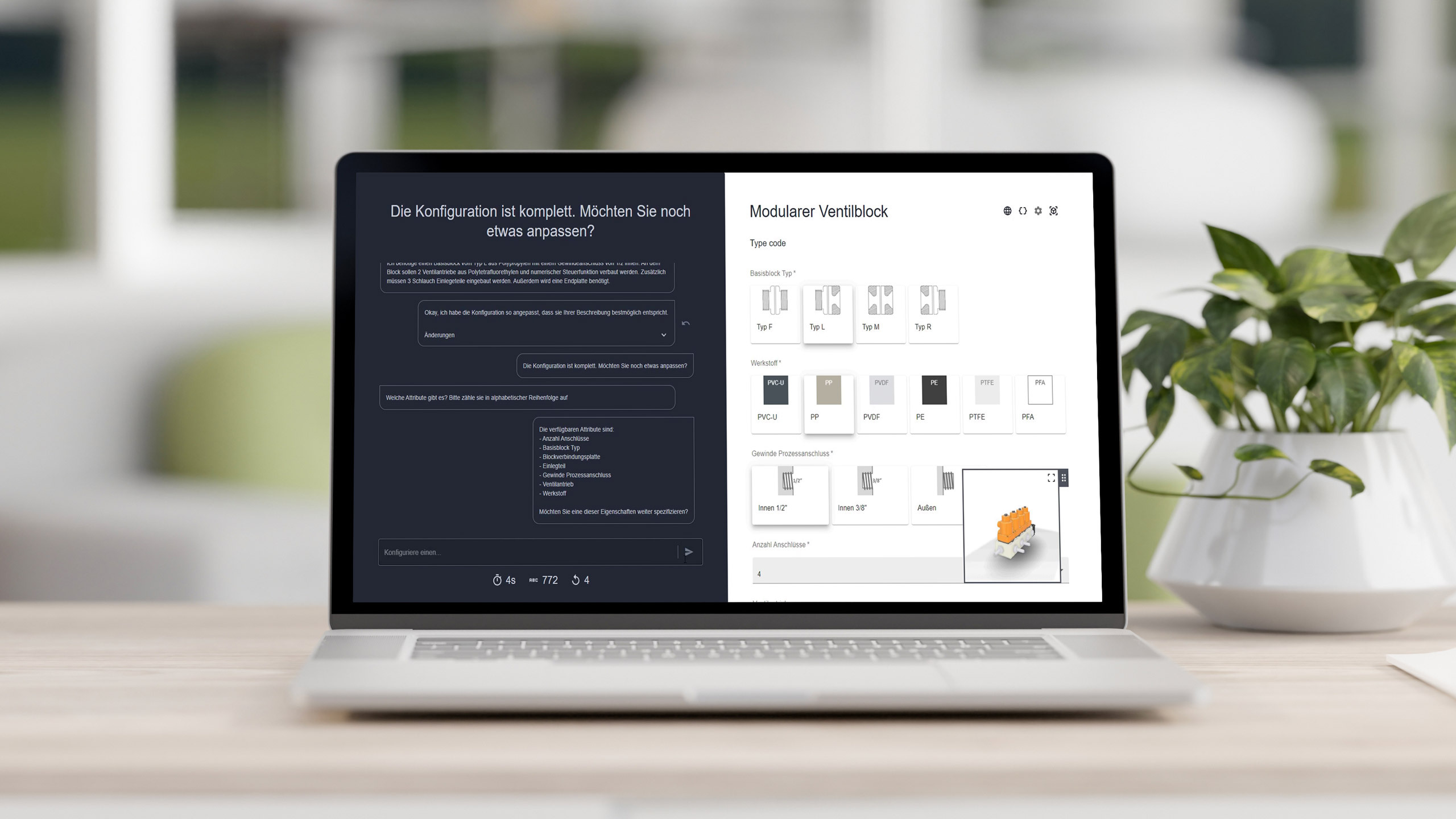In the B2B sector, applications based on large language models (LLMs) are gaining importance. They offer companies the opportunity to provide innovative solutions using natural language as an interface, significantly increasing user-friendliness. But how can such a model be successfully integrated into an application? This post provides an overview of the key steps, techniques, and potentials of LLM integration.
Briefly explained: Large language models (LLMs)
Large language models (LLMs) like ChatGPT enable the translation of natural language into automated processes..
Diese Modelle können in Anwendungen integriert werden, um komplexe Aufgaben zu vereinfachen, sei es durch die Automatisierung von Arbeitsabläufen oder die Bereitstellung von Fachwissen in verständlicher Sprache.
A key aspect of integrating such applications is prompt engineering – the art of formulating precise input commands for LLMs to obtain optimal responses. Fine-tuning also plays a crucial role in adapting the model to specific tasks. These two techniques are essential for developing a customized solution perfectly tailored to the company’s requirements.
The range of LLM applications extends from simple chatbots to complex applications that convert natural language into multi-stage processes.
Here are some examples:

A survey on the application of AI in business processes showed that in 2023, Robotic Process Automation (RPA), Natural Language Understanding and Virtual Agents were among the most widely used AI applications in companies worldwide and across industries.
About 30 percent of companies reported using RPA, compared to 26 percent in the technology and telecommunications sector. AI gained particularly importance in product and service development: 26 percent of companies used it, and in the tech, media, and telecommunications sector, 44 percent. Germans are mostly still cautious about use large language models: according to the study results, 17 percent of companies planned to use AI like ChatGPT, while 29 percent rejected it, and a quarter were still undecided.
Two examples, however, illustrate the potential of LLM application integration and the use of generative AI in the industry:

Integrating large language models into an application requires careful planning and continuous experimentation.
Here are some recommendations:
In developing our Gen AI Showcase, we discovered how fast-paced the field of generative AI is. Within a few weeks, new technologies came to market, forcing us to reconsider our approaches repeatedly.
An important insight was that even complex problems are often solvable when broken down into smaller tasks. The flexibility of LLMs enables even challenging tasks to be tackled step-by-step.
The integration of large language models into B2B applications offers enormous potential for both companies and their customers. LLMs not only significantly simplify complex processes but also create entirely new interaction possibilities.
Our advice: Companies should not view this technology as a future trend but evaluate today how it can transform their products and services. The rapid development and adaptability of LLMs make them an indispensable part of any forward-looking digital strategy.

SIMON GIOVANNI ENGEL
software developer